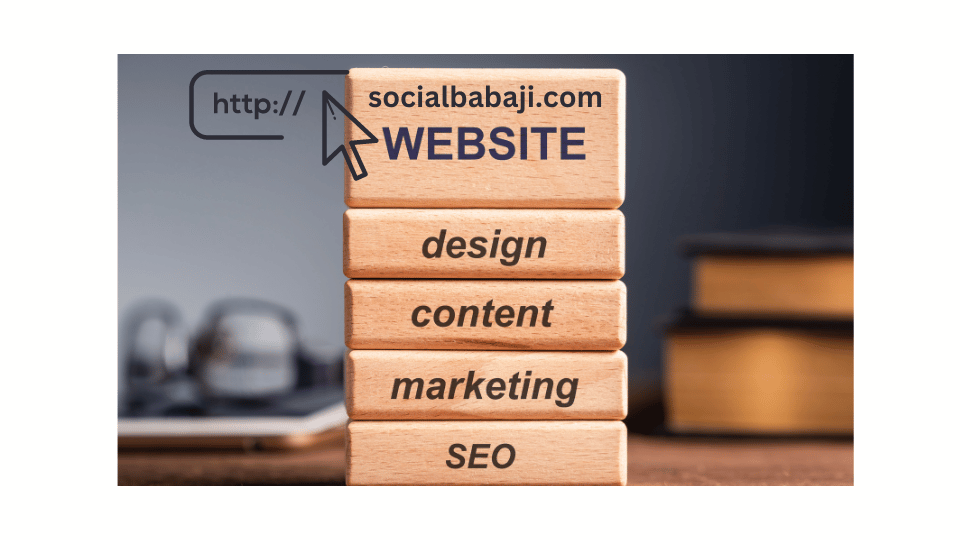In the ever-evolving landscape of the digital realm, a website serves as a virtual storefront, a gateway to your brand’s online presence. However, just like any physical space, it requires occasional revamping to stay relevant, user-friendly, and aligned with the latest technological trends. Here are ten telltale signs indicating that it might be time for a website redesign:
DO FOLLOW thriveagency.com
- Outdated Design and Aesthetics:
The visual appeal of the web is often the first impression users have of your brand. If your design feels outdated or no longer reflects your brand identity, it’s a clear sign that a redesign is in order. Modern, visually appealing websites create a positive user experience.- Poor User Experience (UX):
The user experience is paramount to retaining and attracting visitors. If users struggle to navigate your site, encounter broken links, or experience slow loading times, it’s time for a revamp. A seamless and intuitive UX keeps users engaged and encourages them to explore further.- Mobile responsiveness issues:
With the prevalence of mobile devices, a mobile-responsive design is non-negotiable. If your website doesn’t adapt seamlessly to various screen sizes, you risk losing a significant portion of your audience. A mobile-friendly design is vital for both user satisfaction and search engine rankings.- Slow loading times:
In the fast-paced digital era, users expect websites to load quickly. If your site takes too long to load, visitors may abandon it before even seeing your content. Optimize loading times to ensure a smooth and efficient user experience.- Declining search engine rankings:
Search engines favour websites with fresh, relevant content and a modern design. If your website’s ranking has dropped, it’s a sign that search engines may perceive it as outdated or less relevant. A redesign that incorporates SEO best practices can boost your rankings.- Low Conversion Rates:
If your website isn’t converting visitors into customers, subscribers, or leads, it’s time to assess the user journey. A web page redesign can focus on improving calls-to-action, streamlining the conversion funnel, and optimizing landing pages to enhance conversion rates.- Incompatibility with Current Technology:
Technological advancements can quickly make certain features or functionalities obsolete. If your website struggles to integrate with modern tools, lacks essential security measures or fails to meet current web standards, it’s a sign that a technological overhaul is needed.- Evolution of Brand Identity:
As your brand evolves, so should your online presence. If your site no longer aligns with your current brand identity, messaging, or values, a redesign can bring it in line with your brand’s evolution and ensure consistency across all platforms.- Competition Outpacing You:
Monitoring your competitors is crucial in the digital landscape. If your competitors have modernized their websites, incorporating new technologies and design trends, it’s a clear signal that you need to keep pace. Falling behind in the digital race can negatively impact your brand’s perceived relevance.- Lack of Integration with Marketing Strategies:
If your website isn’t seamlessly integrated with your marketing strategies, including social media, content marketing, and email campaigns, you’re missing out on opportunities. A redesign can ensure that your website serves as a central hub for all your digital marketing efforts.

In conclusion, a website is a dynamic entity that requires regular attention and adaptation to remain effective. Recognizing these ten signs can guide you in determining whether it’s time for a website redesign. Embrace the digital evolution, prioritize the user experience, and ensure that your virtual storefront continues to be a compelling and relevant representation of your brand.
The Redesign Journey: Elevating Your Digital Presence
Embarking on a website redesign journey is not just a response to signs of stagnation; it’s a strategic move toward digital evolution. As you contemplate the redesign, consider the opportunity to reimagine your brand’s narrative, align it with current trends, and create an online experience that captivates and converts.
User-Centric Design:
Base your redesign around user-centric design principles. Delve into user feedback, conduct usability tests, and analyze user behaviour to inform design decisions. A user-friendly interface not only enhances the experience but also fosters a positive perception of your brand.
Incorporating visual storytelling:
Modern websites are more than just information repositories; they are platforms for visual storytelling. Integrate engaging visuals, videos, and interactive elements that narrate your brand story. A captivating visual journey enhances user engagement and leaves a lasting impression.
Optimizing for Conversion:
Beyond aesthetics, focus on optimizing your website for conversions. Fine-tune your calls-to-action, streamline the checkout process, and leverage persuasive copywriting. The redesign should strategically guide visitors toward desired actions, whether it’s making a purchase, filling out a form, or subscribing.
Staying Agile with Technology:
Future-proof your website by staying agile with technology. Embrace responsive design, ensure compatibility with the latest browsers, and integrate emerging technologies that enhance the user experience. An agile approach ensures your website remains relevant in the face of technological advancements.
Enhanced Content Strategy:
A redesign is an opportunity to revamp your content strategy. Evaluate your existing content, identify gaps, and create a plan that aligns with your business goals. Fresh, relevant, and engaging content not only attracts visitors but also supports your SEO efforts.
Aligning with Brand Evolution:
As your brand evolves, your website should reflect these changes. Ensure that the redesign aligns seamlessly with your brand’s current identity, messaging, and values. Consistency across all touchpoints reinforces brand trust and recognition.
Implementing robust analytics:
Integrate robust analytics tools to monitor the performance of your redesigned website continually. Track user behavior, conversion rates, and other key metrics. Analyzing data allows you to make informed decisions, refine strategies, and adapt to evolving user needs.
Iterative Improvement:
A website redesign marks the beginning of an iterative process. Regularly assess performance metrics, gather user feedback, and implement continuous improvements. An iterative approach ensures that your website remains dynamic, adaptive, and aligned with changing digital landscapes.
User education and training:
If your website introduces new features or functionalities, provide user education and training resources. Clear tutorials, tooltips, or documentation can empower users to make the most of the enhanced website features, fostering a positive experience.
Celebrating the relaunch:
The relaunch of your redesigned website is a significant event. Celebrate it by communicating the changes to your audience through various channels. Showcase the improvements, highlight user benefits, and invite feedback to strengthen the bond with your audience.
In conclusion, a website redesign is not merely a makeover; it’s a strategic investment in your brand’s digital future. By focusing on user experience, storytelling, technology, and ongoing improvement, you can navigate the redesign journey with confidence, ensuring that your virtual storefront evolves alongside your brand.
Thank You For Your Valuable Time Please click on the comments and share your feedback.
